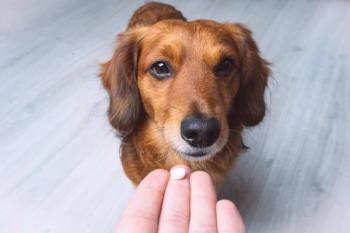
Fighting pet obesity with advancing technology
Dr. Ward weighs in on current and future veterinary technology for monitoring pet?s health.
With all the new technology coming out that helps pet owners track the fitness levels of their pets, Dr. Ernie Ward, associate at Seaside Animal Care in Calabash, N.C., says he is extremely excited about the technology because pet owners overestimate their pet’s activity while they are gone.
“I had a client who couldn’t understand why her pet was obese,” Dr. Ward says. “She told me that her dog ran around the backyard all day while she was gone so he got plenty of exercise.”
Dr. Ward says he had a sneaking suspicion the owner was wrong so he hooked up a home VCR camcorder—this was years ago—and recorded her pet running around for a five minutes then slumping down in the shade and staying put the majority of the day.
But now, pet owners can use these monitors and trackers instead of putting up a make-shift security camera. Dr. Ward says these devices have been rolling out on the market for a couple years and will continue to in three waves.
First wave: Activity trackers
The first wave of devices measured movement but were highly inaccurate, much like a pedometer on humans, Dr. Ward says. They rely heavily on the placement on the body.
Second wave: Body monitors
These can tell owners a pet’s temperature, blood sugar level, oxygen level, heart rate, oxygen saturation (SpO2) and more, Dr. Ward says. These devices are being developed now.
Third wave: Total system management
The final wave that Dr. Ward says is coming in the future will be able to take an instant health picture that can be sent to the pet’s veterinarian every morning. So, if anything is out of the ordinary you’ll be able to call clients and have them bring their pet’s into the office.
As thrilling as all of these devices sound, Dr. Ward says it could be years before these products roll onto the market. Instead of waiting around for these advanced waves, encourage your clients to buy a GPS watch and track how long of a walk they go on with Fido. Pair that with measuring how much food they are eating and clients will be on the right track to beating the bulge.
Newsletter
From exam room tips to practice management insights, get trusted veterinary news delivered straight to your inbox—subscribe to dvm360.




